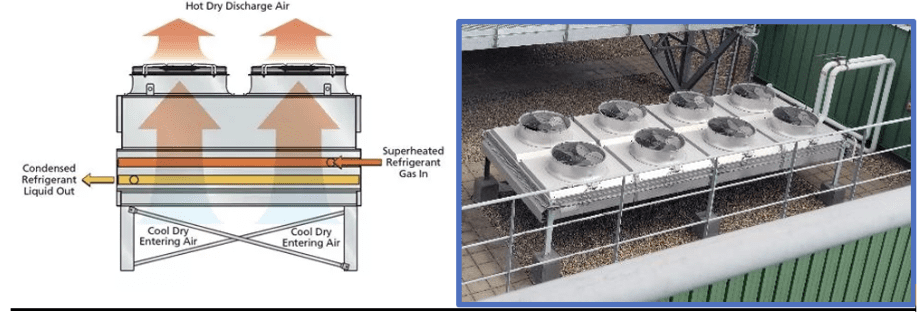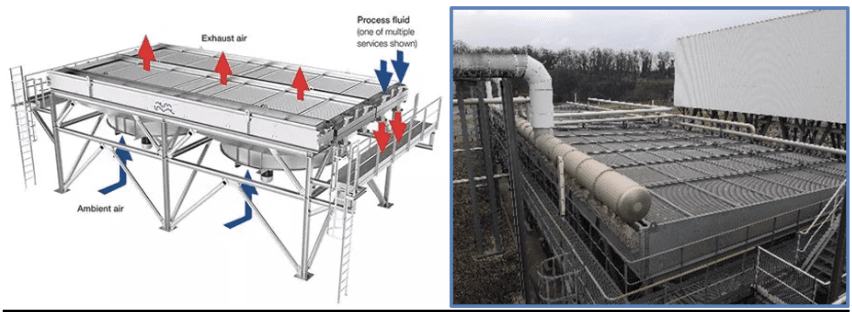- Our PlaygroundOur PlaygroundDiscover Ax System's innovative solutions for maintaining the performance of your industry. Designed to meet the unique needs of each industry, our systems provide effective and efficient cleaning for a range of applications. Whether you're in power generation, oil and gas or any other sector, our tailor-made solutions ensure optimum performance and longevity of your equipment.
- Our SolutionsOur SolutionsDiscover AX System's range of products, designed to meet a variety of industrial cleaning needs. Our products fall into our main categories: Air Cooler and Air Condenser Cleaning, Industrial Misting, Custom Industrial Cleaning, and Industrial Machine Cleaning Services.
We offer specific solutions to meet your unique needs. For instance, we provide Filter Press Cleaners, Electromagnetic Filter Cleaners, and Rotary Filter Cleaners. - What we cleanWhat we cleanDiscover our expertise in high-pressure cleaning for a variety of industrial equipment! Our know-how enables us to work on air condensers, heat exchangers and many other installations. Thanks to our specialized approach, we guarantee optimum performance and enhanced durability for these vital pieces of equipment.
- Our Achievements
- About Us
- Contact
Flat air cooler with induced or forced draft


A dry cooling air cooler is a device used to dissipate heat generated by industrial processes using air as the cooling medium, without the need for water. Its main role is to cool process heat transfer fluids using the ambient air to remove heat. Common heat transfer fluids used in dry coolers include water, water-glycol mixtures often referred to as “antifreeze” or “coolant,” refrigerants such as R-134a, R-410A, R-404A, special blends of thermal oils like Therminol, Globaltherm, Dowtherm, and other liquids specifically designed for their heat transfer properties. These heat transfer fluids circulate within the air cooler to absorb heat from industrial processes and dissipate it into the ambient air, playing a crucial role in the cooling process by transferring heat from the source to the air cooler, where it is then dissipated.
The advantages of a dry cooling air cooler compared to a wet cooling system include reduced or no water consumption, greater flexibility in regions where water is scarce, less dependence on weather conditions, and reduced risks related to water contamination. However, dry coolers generally have slightly lower thermal efficiency and may require higher initial investments.
The concept of “Flat ACHE” (Air-Cooled Heat Exchanger) refers to a design of air-cooled heat exchangers that favors a flat configuration, unlike traditional V or A models. This design is particularly suited for applications where horizontal space is limited and where a uniform distribution of airflow across tube bundles is sought.
Operation and Characteristics
Flat ACHEs use flat tube bundles across which air is blown or drawn through fins to cool the fluid circulating inside. This configuration allows for optimized heat exchange by facilitating uniform air passage and reducing air stagnation zones, thus improving cooling efficiency.
Efficiency and Performance: Thanks to their optimized design, Flat ACHEs offer excellent cooling performance, making these systems ideal for demanding industrial environments. The flat layout also maximizes the use of available space, an important feature for installations with space constraints.
Configuration Flexibility: These systems can be custom-designed to meet the specific needs of each application, allowing a variety of configurations in terms of size, cooling capacity, and component layout.
Simplified Maintenance: The flat design facilitates access to the tube bundles for maintenance and cleaning, helping to maintain optimal efficiency over the long term and reduce maintenance costs.
Advantages of Flat ACHEs
- Space Optimization: The reduced footprint of these exchangers makes them particularly advantageous for industrial sites where ground space is a limiting factor.
- Reduction of Pressure Loss: The flat configuration minimizes pressure losses on the air side, which can translate into reduced energy consumption of fans or blowers.
- Environmental Adaptability: Flat ACHEs are designed to operate efficiently across a wide range of environmental conditions, offering a reliable cooling solution in varied climates.
Applications
Flat ACHEs find application in various sectors, including in power generation facilities, chemical and petrochemical processes, and cooling systems for data centers where efficiency and minimal space occupancy are crucial.Fin Fan Cooler


